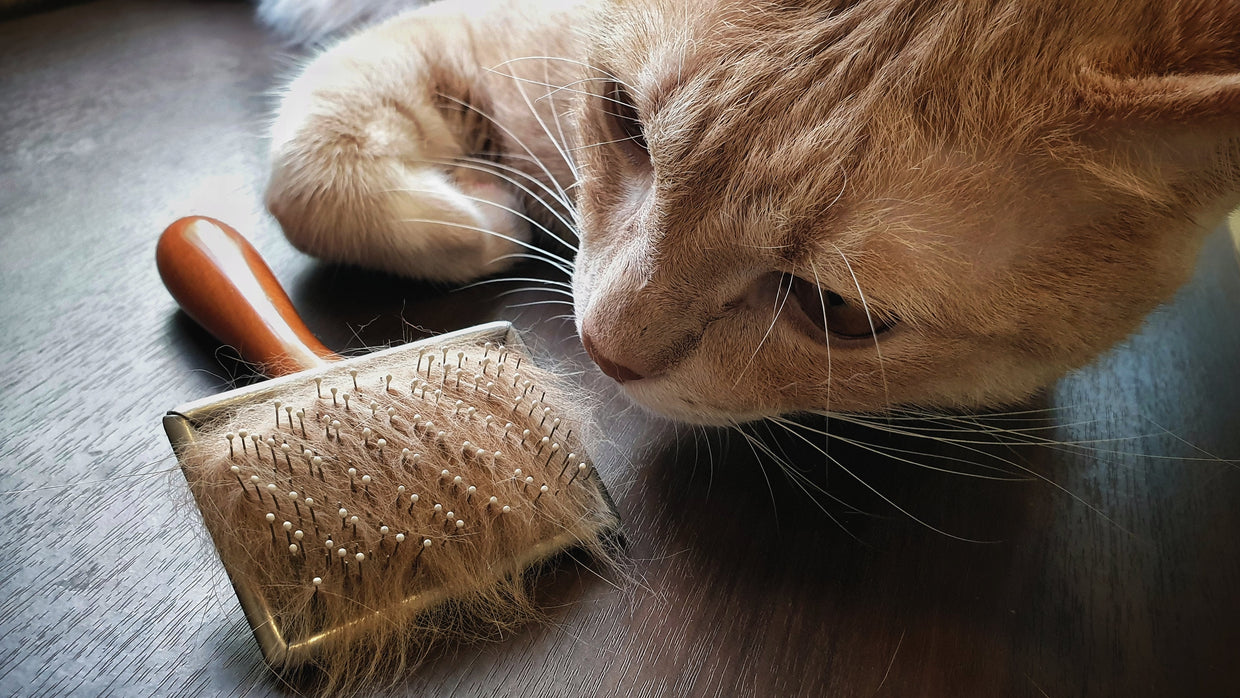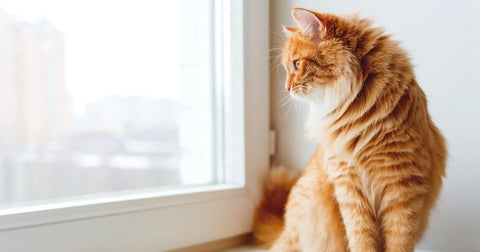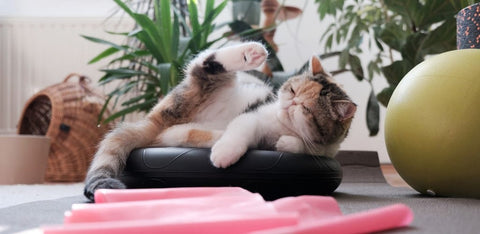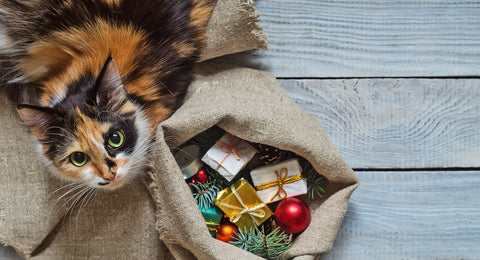

Why’s my cat moulting so much?
Cats are famous for having their own unique quirks. Little things like meowing a certain way when they want to be cuddled, being fussy about particular foods, and demanding obedience from their humans at all times.
As a caring cat owner, you’ll tend to know when your feline friend wants to be left alone and when they need some TLC. But what about if your cat seems to be shedding an unusually large amount of fur? Enough that it looks like they’re trying to leave fluffy clones all around the home?
Here’s a closer look at excess moulting in cats, what it might mean, and what you should do about it...
What causes excess moulting in cats?
First things first: it should come as no surprise to anyone that cats differ in terms of much they moult.
Hairless breeds like the Sphynx probably aren’t too likely to carpet your home in a rich layer of fur. On the other hand, long-haired breeds like the Norwegian Forest Cat can seem to shed more than others, just because they’ve got more fur to lose.
Beyond breed differences, here are some of the factors that can cause your cat to moult excessively:

1. It’s a seasonal style thing
Believe it or not, but your cat is naturally highly attuned to the turning of the seasons. In fact, the calendar cycle will have a lot to do with how much your cat is shedding at any given moment.
Cats generally go through between one and two cycles of hair growth and loss per year, typically around spring and autumn. In spring, they’ll be losing their thicker winter coats in order to be cool as a cucumber for those balmy days on the beach – or more accurately, that warm shady spot in your garden. In autumn, they’ll be getting their next winter wardrobe lined up.
While it’s true that indoor cats will tend to shed throughout the entire year, even they will go through more pronounced periods of moulting depending on the season.
2. The stork’s got a surprise on the way
Pregnancy naturally shakes things up in all kinds of ways, for cats as well as for humans.
The hormonal changes that happen during feline pregnancy can cause your cat to moult a lot more than they normally would. Typically, soon-to-be-mother cats will lose a lot of fur from their undersides, making it easier for their kittens to suckle once they’re born.
Normally, the shedding will stop and the hair will return once your cat has stopped nursing.
The moral of the story is that you shouldn’t be surprised if your pregnant cat starts moulting. And if your ‘non-pregnant’ lady cat begins shedding from their underside, there may be some fluffy surprises on the horizon after all.

3. It’s not always easy being a cat
Between playing with balls of twine, sleeping in the sun, and hunting small creatures with alarming efficiency, cats seem to have a pretty good thing going.
Unfortunately, our feline companions can end up falling prey to stress and anxiety just like we can. And just as with us, heightened stress and anxiety can really do a number on a cat’s health and wellbeing.
Some cats will lose more fur when they are stressed, scared or anxious. If your cat’s been hiding away recently, shaking or acting standoffish, they may be dealing with a lot of stress – and that may be causing them to moult.
Along with creating a safe and peaceful environment for your highly strung kitty to relax in, consider giving them YuMOVE Calming Care for Cats to help take the edge off their anxiety.
4. Everyone hates allergies
Although you might not think so, cats can suffer from a wide range of different allergies that can set them scratching for dear life (all nine of them) and shedding fur. These include things like hay fever, but also allergies to food, dust, cleaning products and even perfumes.
If your cat suffers from seasonal allergies, it might be tricky to figure out whether that’s why they’re moulting, or whether it’s just because of the time of year itself.
In any case, be on the lookout for signs that your cat is irritated by something in their environment – whether food, pollen or hairspray – and book an appointment with your vet if you feel you need to investigate further.

5. The catering’s just not up to scratch
Your cat might be the pickiest eater in the world, with a taste for only the most exclusive fillets of fish, but expensive tastes alone don’t equal a nutritionally complete diet.
Diets that don’t give your cat the ideal range of nutrients can cause their fur to lose its shine and can lead to excess moulting. Whether or not this leads to more serious health issues depends on just how imbalanced their diet is.
Ultimately, though, you really want to ensure your cat is eating high-quality, nutritionally dense food that’s been formulated to meet their needs. Premium, nutritional supplements can do a lot of good, too. For example, YuMOVE Skin & Coat Care Moulting for Cats contains a blend of natural, cold-pressed Omega-3 and 6 oils to keep your cat’s coat healthy, shiny and nourished.
When should you be worried?
As you can see, there are plenty of reasons why your cat may be re-carpeting your home with their fur – and they’re not all cause for concern.
At the same time, though, excess moulting can point towards more serious health problems, ranging from severe malnutrition to things like liver, thyroid or kidney disease.
Here are a few tell-tale signs that your cat’s moulting may call for a fast visit to the vet:
- Your cat is biting, scratching or chewing their fur – this is a sign of real skin irritation and can point towards parasites and chronic discomfort. Ultimately it can lead to infection.
- Your cat is losing weight along with their fur – this can indicate serious underlying health conditions, from hyperthyroidism to organ damage and malnutrition. We recommend you consult your vet immediately.
- Your cat’s energy levels have dropped substantially – this is also a sign that your cat might be struggling with deeper underlying health problems, or inadequate nutrition.

How can you prevent excess moulting?
Fortunately, there are all kinds of things you can do to reduce how much your cat is moulting. In fact, we’ve written a whole article on the topic already. You can check that out here.
Here are a few tips just to recap:
- Improve their diet – giving your cat a more balanced diet, complete with health-supporting cat skin supplements and adequate hydration, can do a world of good.
- Brush your cat like there’s no tomorrow – often, cats shed more around the home because they’re not being brushed enough. Aim to brush your cat several times a week.
- Create a soothing environment – if your cat’s struggling with stress, creating a calm, safe and comfortable space for them is essential. Limit surprises, loud noises, and contact with new people and animals.
Have you noticed your cat moulting more than usual? Are there any tips you’d like to share? Reach out and let us know on Facebook and Instagram.



